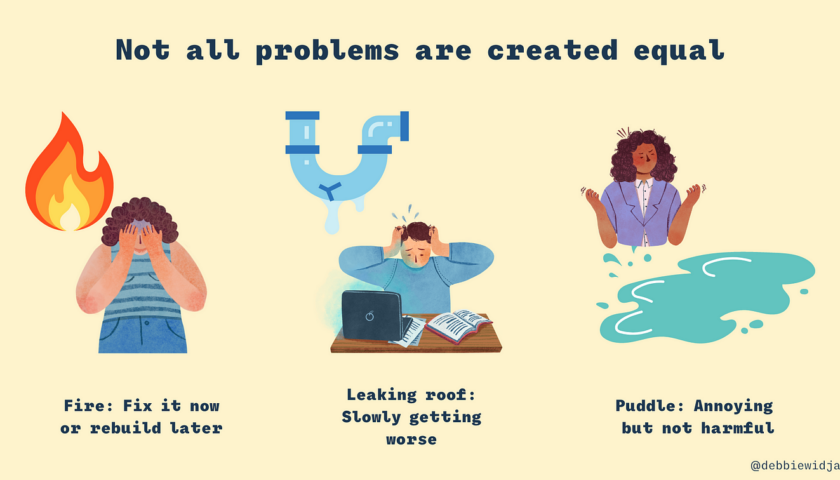Negotiation is a dynamic, fast-moving, and often uncertain process. You need to be ready for all kinds of possibilities.
Negotiating generally evokes a picture of discussion involving trading offers, and counteroffers, or making threats and promises. As a project test pilot it is very vital that we understand the who, what, and how of negotiation. It is a skill that will help you deliver the product while meeting quality, scope, and schedule. Let me explain who, what, how framework, and how to put it to work.
- The who is about engagement. Will the parties be friends, or are they going to be foes? Is their power equally balanced, or is one person up and the other down?
- The what is about framing, how they define the task at hand. Is this a zero-sum win-lose situation? Or are their opportunities for mutual gain?
- Finally, the how is about norming, setting the unwritten rules of the game. Will they disclose their interests and seek to create value? Or will they hide their cards and haggle?
You can’t decide any of the above questions unilaterally. Your counterpart’s views about negotiation may be very different than your own. But you need to influence them positively, both their behavior and their attitudes to the extent you can. Beyond that you’ll have to adapt to their approach and make the best of it. It’s all ongoing action and reaction. And there’s plenty of room for missteps and miscommunication along the way. You must be ready for either extreme and everything in-between. Constantly monitoring the interaction, recalibrating where necessary, is the essence of negotiation agility.
As a project test pilot we are accountable and responsible for the product’s scope, quality, and safe operations throughout its life cycle. A project test pilot is responsible for all the decisions made or not made, actions taken or nor taken, and consequences of it. As a rule we have to act with responsibility, respect, fairness and honesty. Our guiding principles in order of importance are:
- Is it safe for operations in the most demanding situation and workload (external and internal factors) ?
- Can average pilot with nominal experience achieve proficiency?
- Is it within the scope?
- Does it meet the quality standards?
- Can it be done in a better or efficient manner to reduce the workload?
- How will it affect the scope and schedule?
What I learned
Set your baseline. There’s so much uncertainty in negotiation, but the one thing that you can and must know are your own priorities and trade-offs. To craft a strategy, start by setting your baseline. Most people do this poorly if they do it at all. Following the above simple steps gives you an important edge. Second, prepare alternative recommendations of equivalent value. Third, be agile and be prepared to modify your recommendations, as your discussions evolve and you learn more about an issue.
Do your homework. Doing homework in advance pays off many times over. It lets you focus on the negotiation process while you’re in the middle of it. It will give you discipline and confidence.
Aim High. Be always excited about the meeting and aim high. Be ready with specifics and patiently handle all the questions. You have to understand that not everyone is a pilot and may not be able to visualise the workload and how forgetful pilots are. Discuss a mission and explain every step in great detail. Patiently discuss what-if scenario. I always found this to be one of the best ways to win the support of the other side. Always discuss how to system or human-machine interface (HMI) be made better and how it will achieve the safety, operational or quality objectives. Dig out previous incidents or accident data to highlight your point.
Ask Questions. During the meeting, do not get stuck in your head, or think that you already have answers. Ask questions. Go to the root cause of the problem by asking questions and getting a deeper understanding of the system and its design. The aim of the discussion should be to have a complete understanding of each other’s concerns and objections. Ask for suggestions. Avoid rhetorical questions and instead, ask- how we can make it better. Shift the focus on facts that can be analyzed and debated. Open-ended questions can expand everyone’s thinking, your own, as well as the person you’re negotiating with.
Deep listening is essential to building a collaborative relationship. It’s a pathway for uncovering what others are thinking and feeling. Many people do this poorly, or at least not as well as they should. You might say that’s a universal problem, but it’s especially costly in negotiation. Common mistake number one is doing most of the talking. It prevents you from learning other people’s concerns and priorities, plus it taxes their patience. Those in weak bargaining positions are especially prone to talking too much. If anything, it portrays their lack of confidence. Mistake number two is not truly listening when others speak. Internal chatter, worrying about what you’re going to do or say next is the culprit. It’s a distraction that takes you out of the here and now. As a result, you may miss key signals and your counterpart may sense that you’re not fully engaged. The third mistake is only registering people’s words. You’re at your peril if you overlook what’s expressed in tone, facial expression, and body language. Sometimes the most important message is their subtext.
Buy Time. Yes, there will also be moments where you may be unsure of what to say or do. Don’t worry, there’s a simple remedy. Just buy yourself a little time. You might just say I’ll have to think about that or it could be let’s step back and see how that fits with what we’ve been talking about so far. Comments like that will give you time to collect your thoughts and move ahead with the rest of the discussion.
The “Yes and Yes” rule. When emotions are running high and both party are not ready to give an inch. What do you do? I learnt this tactic from my boss. He would promptly intervene in such situations and say let us discuss points that are reasonable and we can both agree on. He would pick up one of their argument call it positive and say let’s explore that further. Saying “Yes and Yes” also can defuse tense moments.
Sometimes you should say no in negotiation. Your counterpart has demanded something totally unreasonable or unfair. Or maybe it’s their behavior. They’ve been domineering, and you want that to stop. No matter how frustrated or angry you feel, the trick is to say firm NO with positive sentences like affirming strong relationships and a deeper understanding of each other position. I say once again trick is to marry NO with Positive affirming sentences.
As a test pilot it is not only your responsibility for the safety of the product for its entire life cycle which could be anything from 40- 60 years but you are also responsible for scope, schedule, and operate within ever-tightening budgetary constraints. No organisation can afford unlimited effort towards flight testing. Be prepared to shoulder the responsibility as a project test pilot.
People say negotiation is art. But I have always found negotiation to be the toughest amongst all the activities of Project Management.
In business as in life, you do not get what you deserve, you get what you negotiate.



